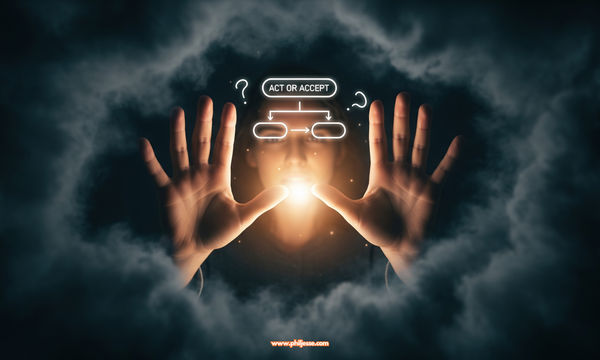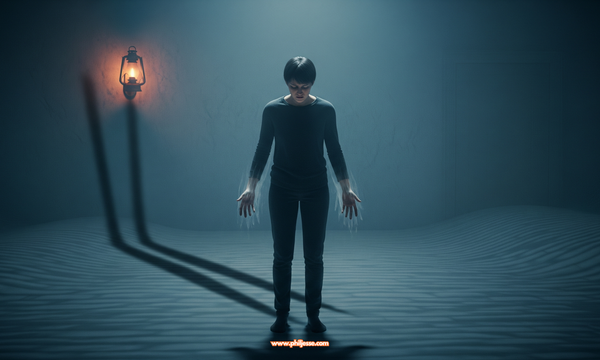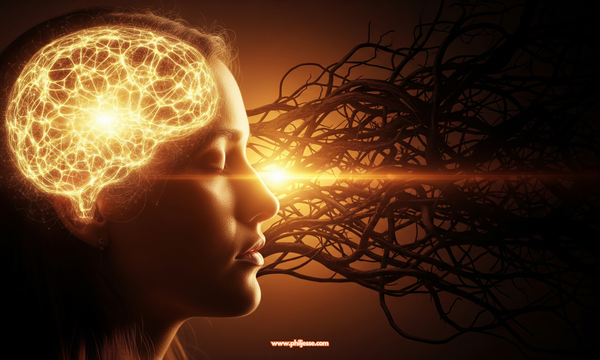The Art of Being Understood: Navigating the Labyrinth of Human Connection
Being seen is validation, being heard is acknowledgement. But to be truly understood is the most profound connection, where trust is built and we feel at home. In a world of digital noise, why is this so elusive? This is a philosophical exploration of our deepest human need.

Have you ever finished a conversation and walked away with the distinct feeling that, while you were looked at and listened to, the core of what you were trying to express remained invisible? It’s a uniquely modern form of loneliness, to be surrounded by people, connected by devices, yet feel profoundly misunderstood. We are seen in meetings, our voices are heard on calls, our images are viewed on screens. But are we, in the truest sense of the word, understood?
This exploration is not about assigning blame for the relationships that falter or the connections that fade. It is an invitation to look deeper, to examine one of the most fundamental, yet often overlooked, dynamics of the human experience: the powerful trifecta of being seen, heard, and understood.
In a world accelerating at an unprecedented pace, driven by AI, algorithms, and the relentless flow of information, the art of genuine human connection is both more challenging and more vital than ever. This is a philosophical guide to understanding that art – not as a set of rules, but as a practice in awareness, empathy, and courage that can reshape our relationships with others, and most importantly, with ourselves.
The Hierarchy of Connection: From Being Seen to Being Understood
Human connection isn’t a single event; it’s a layered experience, a hierarchy of perception. At the base, we have the most common and superficial layer: being seen.
👀 To Be Seen: The Realm of the Surface
To be seen is to be acknowledged. It’s the nod from a colleague in the hallway, the ‘like’ on a social media post, the simple recognition of your physical presence. In our digital age, the opportunities to be ‘seen’ have multiplied exponentially. We curate our lives into visual narratives, presenting carefully selected images and videos to the world. The validation can be instant and gratifying, a fleeting hit of dopamine delivered through the screen.
This is the realm of the Halo Effect, where judgments are formed based on appearance, aesthetics, and the polished surface we present. But being seen, in isolation, is a hollow victory. It lacks depth. You can be the most visible person in the room, or have millions of followers online, and still feel entirely alone. Because being seen is not the same as being recognised for who you are beneath the surface.
👂 To Be Heard: The Exchange of Words
One level deeper lies the act of being heard. This is where communication begins. Your words are registered, your opinions are noted, your voice occupies auditory space. In a professional context, you might be heard in a meeting; your points are valid and perhaps even acted upon. In a personal context, a friend or partner might listen to you recount your day.
But hearing is not always listening. We’ve all experienced the difference. Someone can hear your words while their mind is elsewhere – planning their response, waiting for their turn to speak, or filtering your experience through their own biases. It’s a transactional exchange of information, but it often stops short of becoming a true connection. You can be heard, yet the emotional resonance of your message, the ‘why’ behind your words, remains untouched.
😊 To Be Understood: The Pinnacle of Connection
The ultimate, and rarest, form of connection is to be truly understood. This is where the magic happens. To be understood is to feel that someone has not only seen you and heard your words, but has also grasped the meaning, the emotion, and the intention behind them. It is the synthesis of sight and sound into the alchemy of empathy.
Feeling understood is the moment a friend says, “It sounds like you’re not just angry, but also deeply hurt,” and you feel a profound sense of relief. It’s when a partner listens to your fears and, instead of offering solutions, simply says, “I get it. That sounds incredibly difficult.” It’s in these moments that bonds are forged, that trust is built, and that the feeling of loneliness dissolves.
This level of connection requires a genuine and authentic energy exchange. It cannot be faked or forced. It is a two-way street, demanding both the courage to express oneself vulnerably and the empathy to receive another’s truth without judgment. This is why, for many of us, the number of people in our lives with whom we feel truly understood can be counted on one hand. It is a precious and sacred space.
The Modern Paradox: Hyper-Connected, Yet Misunderstood
Our modern world presents a fascinating paradox. We are more connected than any generation in history, yet feelings of isolation and misunderstanding are widespread. The very tools designed to bring us together often contribute to a sense of superficiality.
The speed of the internet, the immediacy of social media, and the sheer volume of information we process daily have conditioned us for rapid consumption and quick judgments. We scroll, we glance, we react. We have less time and, perhaps, less patience for the slow, nuanced process of deep listening and genuine understanding. We form opinions based on a 280-character tweet or a 30-second video clip, mistaking a snapshot for the whole picture.
This environment makes true understanding a counter-cultural act. It requires us to consciously slow down, to resist the urge to immediately judge or advise, and to offer our undivided attention – our most valuable currency – to another person.
It’s also important to acknowledge that not everyone is on a quest for this kind of connection. Some people thrive in solitude, choosing to be alone without feeling lonely. Their inner world provides all the understanding they need. This is a valid and powerful choice. However, for the majority who seek to build meaningful bonds – with partners, friends, family, or colleagues – navigating the modern labyrinth of communication is a central life challenge.
The Practical Art of Fostering Understanding
If being understood is the goal, how do we cultivate it? It is an art, a practice that involves both how we relate to others and how we present ourselves. It requires skills that we can consciously develop.
Part 1: The Art of Understanding Others
To receive understanding, we must first learn to offer it. This is an active process, a core tenet of both emotional intelligence and The Bar Raiser Mindset’s principle of continuous improvement.
1️⃣ Listen Beyond the Words: The next time someone is speaking to you, practice listening not just to the content of their sentences, but to the underlying emotion. What is the feeling beneath the story? Are they expressing frustration, excitement, fear, or joy? Pay attention to their tone of voice, their body language. Often, the most important information is communicated nonverbally.
2️⃣ Cultivate Genuine Curiosity: Approach conversations with a mindset of curiosity rather than judgment. Your goal is not to win a debate or to impose your view, but to understand their unique perspective. Ask open-ended questions that invite deeper sharing:
- “How did that feel for you?”
- “What was the most challenging part of that?”
- “What’s on your mind when you think about that?”
3️⃣ Practice Empathetic Reflection: Before jumping in with your own story or advice, reflect back what you’ve heard. This powerful technique validates the other person and ensures you’ve understood them correctly. It can be as simple as:
- “So, if I’m hearing you right, you’re feeling overwhelmed because…”
- “It sounds like you’re incredibly proud of that achievement.”
- “That sounds like a really difficult position to be in.”
Part 2: The Courage to Be Understood
Being understood also requires that we make ourselves understandable. This is an act of courage and vulnerability.
1️⃣ Communicate with Clarity and Honesty: Practice expressing your own thoughts and feelings clearly and responsibly. Use "I" statements to own your experience (e.g., "I feel hurt when..." instead of "You always make me feel..."). This invites empathy rather than defensiveness.
2️⃣ Embrace Vulnerability: True understanding is impossible without vulnerability. It means sharing not just your successes, but also your fears, your uncertainties, and your imperfections. This is how we allow others to see the real us, beyond the curated surface.
3️⃣ Set Healthy Boundaries: Recognise that not everyone will have the capacity or willingness to understand you, and that is okay. Part of self-respect is learning to invest your energy in relationships where understanding is reciprocal. It’s about discerning where to be open and vulnerable, and where to protect your energy. This aligns with the wisdom I've shared on understanding and managing your personal energy.
The Quiet Power of Being Understood
To feel truly understood is to have your inner world seen, validated, and held with care by another. It is a fundamental human need that sits at the heart of our most meaningful relationships. It doesn't mean the other person must agree with you, but simply that they get you. They see the world through your eyes, for a moment, and acknowledge your reality as valid.
In our fast-paced, often superficial world, cultivating this level of connection is a radical act. It requires patience, presence, and a commitment to moving beyond the surface. It asks us to be better listeners and braver communicators.
The journey to being understood begins with the journey of understanding ourselves – our own needs, emotions, and values. From that place of inner clarity, we can begin to build bridges of empathy to others, creating connections that are not just seen or heard, but are felt, deeply, in the quiet, powerful space of mutual understanding. That is where we truly find our tribe, our community, and our place in the world.
The principles discussed are not a substitute for professional advice. Individual results from applying these concepts will vary, as your unique path, choices, and consistent efforts play the most significant role in your experiences. If you require guidance regarding specific personal, financial, medical, or mental health situations, please consult with a qualified professional. Please engage with these ideas responsibly, understanding that you are the architect of your choices and actions.





